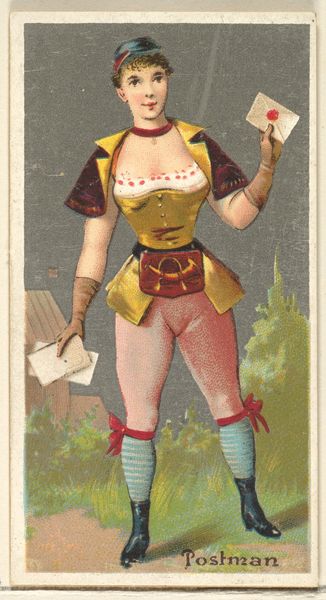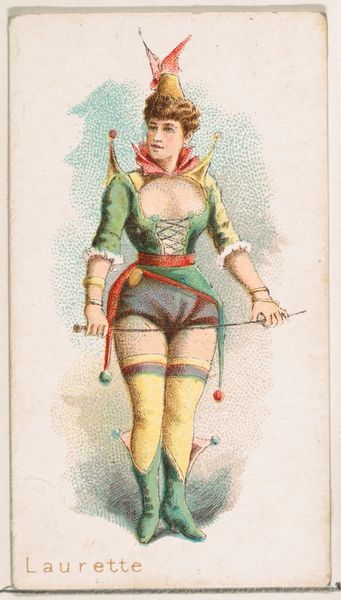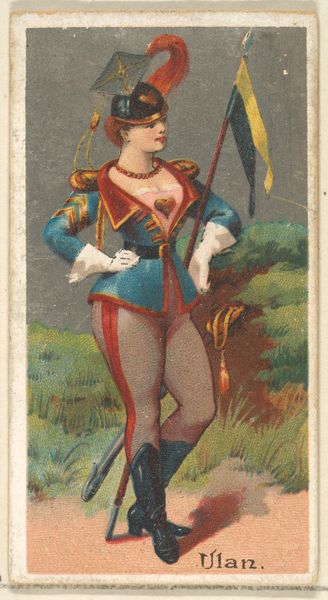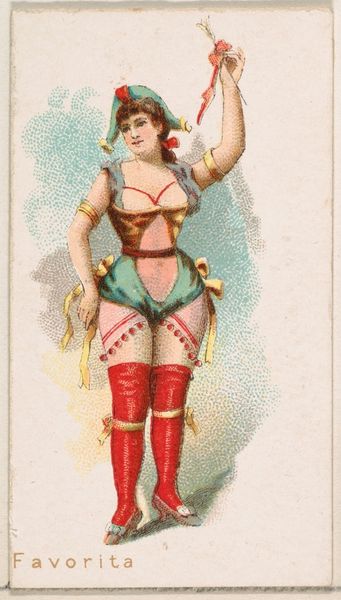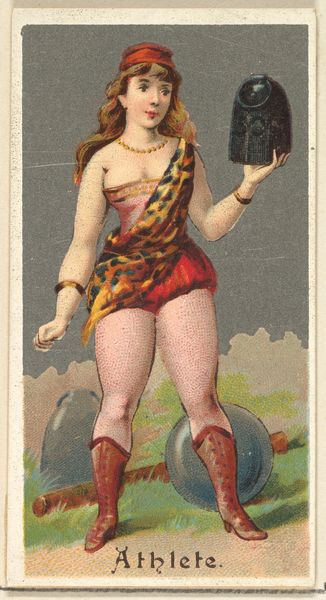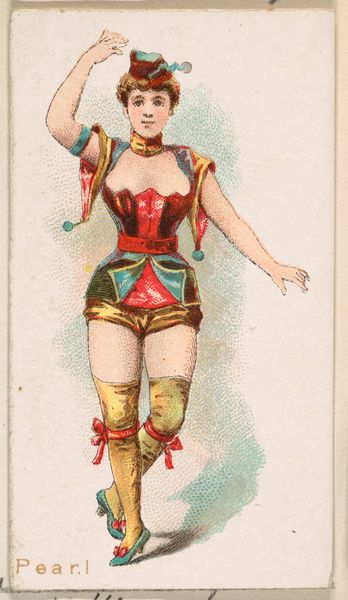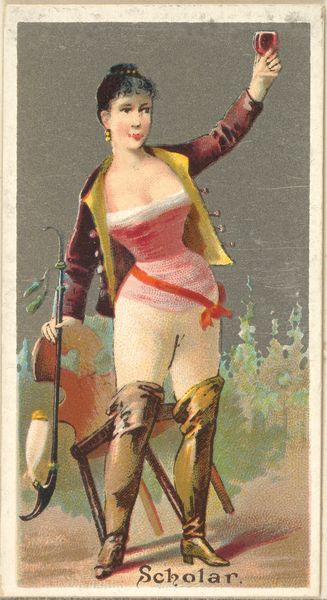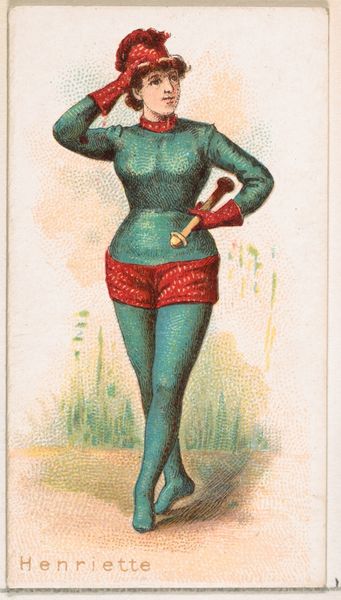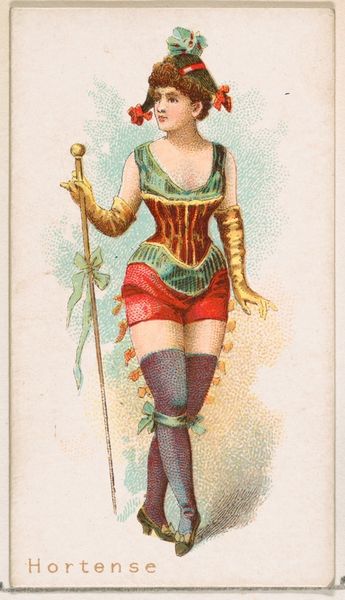
Postillion, from the Occupations for Women series (N166) for Old Judge and Dogs Head Cigarettes 1887
0:00
0:00
#
portrait
# print
#
coloured pencil
Dimensions: sheet: 2 11/16 x 1 1/2 in. (6.9 x 3.8 cm)
Copyright: Public Domain
Curator: What strikes me immediately is the, shall we say, "aspirational" element of this woman’s presentation. Editor: Oh, definitely. I get a vaudeville vibe. The saturated colours and simplified form—almost cartoonish—suggest cheap print materials. I bet this was mass-produced, probably to sell a product. Curator: Indeed. What we’re looking at is an 1887 coloured-pencil print by Goodwin & Company, titled "Postillion, from the Occupations for Women series for Old Judge and Dogs Head Cigarettes," part of a set trading on popular images of women and work. Editor: The term "occupation" here seems more…performative than practical, right? A costume more than credible work wear. Curator: Precisely. These images weren't about depicting actual labor. The series taps into evolving concepts of femininity and their association with leisure. Consider that this era saw the rise of consumer culture and new public roles for women, though largely within set boundaries. Editor: And that the artist’s skill with coloured pencils really elevates what otherwise might be purely commercial art. The layering gives the figure depth; she's got a presence that most trade cards lack. It’s surprisingly refined, especially her complexion. Curator: It reflects an engagement with the aesthetics of Japonisme that swept popular culture. Consider her poised presentation as it would affect tobacco sales. The question becomes: how were these images circulated? Who consumed them, and what did they signify about aspiration, gender, and consumption at that moment? Editor: Looking closely, it’s remarkable the illusion of quality the printers achieved on such cheap stock. Someone carefully considered how to wring the most value out of limited resources—the saturation, the slightly embossed look… It aimed to catch the eye in a busy shop. Curator: Ultimately, these were disposable images, designed to circulate widely and fleetingly, playing on evolving social attitudes, albeit in the service of commerce. And now, in museum archives like The Met, we examine its public role in how to create lasting memory through these figures. Editor: It certainly makes you appreciate how artists adapted craft techniques to commercial needs in that time, transforming basic material into things people found irresistible. Curator: A perfect capsule of late 19th century consumer culture and the popular artistic strategies that supported its rise.
Comments
No comments
Be the first to comment and join the conversation on the ultimate creative platform.
